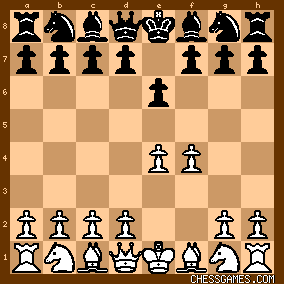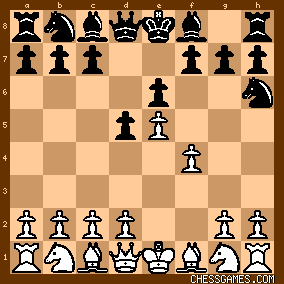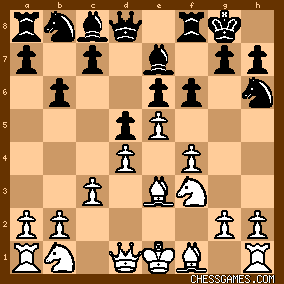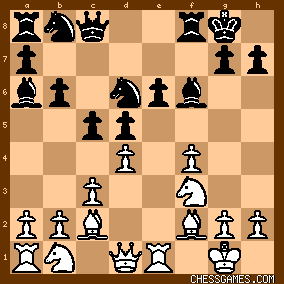LIFE Master AJ: GM Igor V. Glek (2531) - Dimitrij Bunzmann (2525) / [C00]
FRA-chT / Top 16 GP Basse, France (Rnd # 8.3) / 31,05,2007.
[Part I]
Both the POTD and the "Game of The Day," were very interesting ... I decided to annotate one of them. I did not like much of Black's play, I thought that D. Bunzmann made some basic errors ... early on. (So I annotated this game ... as much as for my own understanding, as anything else.) 1.e4 e6; 2.f4!?,
OK, go ahead and throw the opening book in the trash can for this game, its not going to be a lot of use here! 
click for larger viewBlack should think long and hard of where he is going to place his pieces. [ An FM is south FL once gave the following piece of advice: "A.J., you should always take a lower-rated player out of book as soon as you can." (He believed the sooner a non-master went out of book, the more likely it was that they would make a mistake.) We can only guess at Glek's reasoning here, and maybe why he played 2.f2-f4!? ] ["Book" is: 2.d4, etc. ]
2...d5; 3.e5,
To me, this makes more sense than capturing on d5, White has to get in some development before he opens this position up! 3...Nh6!?; (Hmmm.)
PB, and all that, but I am not sure that this is the correct place for this Knight. (In the long run.) 
click for larger view But I am also no expert on the Black side of the French, so I am not the last word here. (If Black could manage to actually get his Knight to the f5-outpost ...) [ Instead, after the logical line of: 3...c5; 4.c3 Nc6; 5.d4, "~" (real estate)
when White has a typical space advantage out of the opening. (However, computer analysis will prove that Black is OK here, and that the size of White's edge is smaller than the actual game.) ] Both sides continue to develop.
4.Nf3 Be7; 5.c3 0-0; 6.d4 b6; 7.Be3 f6!?;
While ....f7-f6; might be the move recommended by the "Power-Book" here, I am not sure that I entirely trust it as 100% reliable. (timing) 
click for larger view I prefer the more logical (and possibly less dangerous) break of ... c7-c5. [I feel that the move of: 7...c5; ∞ is a possible improvement over the course of the actual game here.
(NO games in the DB!!!!!!!! Who says that chess is played out?) ] 8.exf6, ('!?')
White goes for a type of position where Black's backward e-pawn is a definite liability ... there is also the question of what to to with Black's LSB. [ Or 8.Bd3 c5; 9.Nbd2 Nc6; "~" (unclear) ]
8...Bxf6;
The Bishop does not accomplish a lot of this square. (Fritz prefers capturing with the Rook, but I am not sure it makes any difference.) In the long run, the KB might be needed on this square, in order to meet Ng5 with ...BxN/g5. 9.Bd3 Ba6; 10.0-0 Nf5; 11.Bf2 Qc8!?; 12.Re1, White piles up on the KP. (Logical.) The alternative was to swap Bishops on a6. [ Or RR12.Bxa6, "=" maybe  here. ] here. ]
12...Nd6?!; (Maybe - '?')
Black misses his chance to get rid of his "Bad Bishop" and (from here), his game goes steadily downhill. [ Black's best bet would have (instead) been to play: 12...Bxd3; 13.Qxd3 Nc6; 14.Qe2, "  " - Fritz 12. ] " - Fritz 12. ] 13.Bc2! c5?!;
I am astounded, the "eval's" radically change after this move, apparently Black has no time for his 'normal' pawn break. (And he has already gotten in ...f7-f6.) 
click for larger view One can already sense that this is a French Defense ... where something has gone badly wrong for Black. [ Better was: 13...Nc6; 14.Nbd2, "  " and White only has a small edge. ] " and White only has a small edge. ] | 




